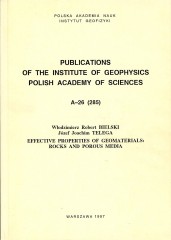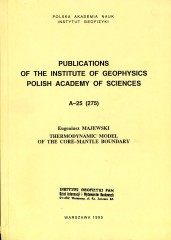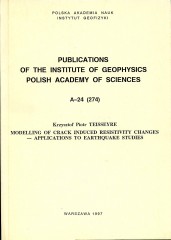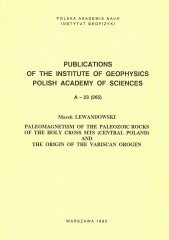BROWSE - VOLUME LIST
- A - Physics of the Earth's Interior
- B - Seismology
-
C - Geomagnetism
C-119, C-118, C-117, C-116, C-115, C-114, C-113, C-112, C-111, C-110, C-109, C-108, C-107, C-106, C-105, C-104, C-103, C-102, C-101, C-100, C-99, C-98, C-97, C-96, C-95, C-94, C-93, C-92, C-91, C-90, C-89, C-88, C-87, C-86, C-85, C-84, C-83, C-82, C-81, C-80, C-79, C-78, C-77, C-76, C-75, C-74, C-73, C-72, C-71, C-70, C-69, C-68, C-67, C-66, C-65, C-64, C-63, C-62, C-61, C-60, C-59, C-58, C-57, C-56, C-55, C-54, C-53, C-52, C-51, C-50, C-49, C-48, C-47, C-46, C-45, C-44, C-43, C-42, C-41, C-40, C-39, C-38, C-37, C-36, C-35, C-33, C-32, C-31, C-30, C-29, C-28, C-27, C-26, C-25, C-24, C-23, C-22, C-21, C-20, C-19, C-18, C-17, C-16, C-15, C-14, C-13, C-12, C-11, C-10, C-9, C-8, C-7, C-6, C-5, C-4, C-3, C-2, C-1
-
D - Physics of the Atmosphere
D-79, D-78, D-77, D-76, D-75, D-74, D-73, D-72, D-71, D-70, D-69, D-68, D-67, D-66, D-65, D-64, D-63, D-62, D-61, D-60, D-59, D-58, D-57, D-56, D-55, D-54, D-53, D-52, D-51, D-50, D-49, D-48, D-47, D-46, D-44, D-45, D-43, D-42, D-41, D-40, D-39, D-38, D-37, D-35, D-34, D-33, D-32, D-31, D-30, D-28, D-27, D-26, D-25, D-24, D-23, D-22, D-21, D-20, D-19, D-18, D-17, D-16, D-15, D-14, D-13, D-12, D-11, D-10, D-9, D-8, D-7, D-6, D-5, D-4, D-3, D-2, D-1
- E - Hydrology
- P - Polar Research
- M - Miscellanea
-
Online First
A - Physics of the Earth's Interior
Interactive Dynamics of a Heterogeneous Seismic Source. A Model with the Slip-dependent Friction
Author(s): Senatorski P.
Volume: 354
Series: A-27
Volume: 354
Series: A-27
Earthquakes can be perceived from two different points of view. First, they can be identified with earth vibrations that cause buildings to sway, glass to ring, small objects to fall down, or, from time to time, much more disastrous phenomena in the case of large earthquakes. On the other hand, they can be defined by the physical processes that cause these vibrations, i.e., by slip movements along the tectonic faults. In this work, the second aspect of the earthquake related phenomena, i.e., physics of earthquake sources and earthquake generation mechanisms, is studied.
Effective Properties of Geomaterials: Rocks and Porous Media
Author(s): Bielski W., Telega J.
Volume: 285
Series: A-26
Volume: 285
Series: A-26
This comprehensive survey consists of two parts. In Part I we present the available results concerning the effective properties of cracked materials, mainly rocks. The second part of the paper deals with the transport and effective properties of porous materials in the case of a rigid and deformable skeleton. The whole paper is oriented towards applications in geophysics and geomechanics. Thus, much attention has been devoted to two-phased media, which model the upper crust of the Earth. Such media may be either isotropic or anisotropic cracked elastic bodies, though their behaviour can also exhibit inelastic features. Porous media may be dry, saturated or partially saturated. One-phase and multi-phase flows through porous media have been considered.
Thermodynamic Model of the Core-mantle Boundary
Author(s): Majewski E.
Volume: 275
Series: A-25
Volume: 275
Series: A-25
High pressure atomic diffusion of Fe0.94O from the mantle to the liquid outer core, solution of Fe0.94O in the liquid outer core, melting of FeS-troilite at the core-mantle boundary in the Earth, and diffusion of liquid iron from the outer core to D'' layer, are modelled. The core-mantle boundary is treated as a phase boundary and a surface of solution. The liquid outer core is modelled as a solution layer. Some interactions between the core-mantle boundary and the inner core boundary are considered. It is assumed the Fe0.94O soluted and FeS-troilite melted at the core-mantle boundary are transported in the process of thermal convection in the outer core to the inner core boundary. Next, Fe0.94O precipitates and FeS-troilite crystallizes at the inner core boundary. Local equations for the diffusion-controlled and interface-reaction-controlled rates of mass transfer across the core-mantle boundary are derived.
Modelling of Crack Induced Resistivity Changes - Applications to Earthquake Studies
Author(s): Teisseyre K.
Volume: 274
Series: A-24
Volume: 274
Series: A-24
An anisotropic resistivity model of rocks that contain spatially oriented crack systems is presented. Each system consists of open cracks filled in with material of different resistivity than that of the rock frame; the cracks in the system have the same orientation and shape. Generally speaking, the resistivity change caused by inclusions (cracks) is intermediate between two extreme cases: inclusion effect expressed by connection in series, and inclusion effect expressed by parallel connection. Resistivity changes in three directions are attributed to geometry of the cracks, so the resistivity tensor is calculated for a specified crack geometry, by adding serial and parallel part of the change.
Paleomagnetism of the Paleozoic Rocks of the Holy Cross Mts (Central Poland) and the Origin of the Variscan Orogen
Author(s): Lewandowski M.
Volume: 265
Series: A-23
Volume: 265
Series: A-23
The Holy Cross Mts are an old, Paleozoic massif, situated close to the Tornquist-Teisseyre Tectonic Zone and structurally incorporated into the Epi-Variscan platform. The area consists of two main units, namely the northern (NHCM) and the southern (SHCM), separated by the west-northwesterly striking Holy Cross Dislocation. Both regions differ significantly in the history of facial development, continuity of the stratigraphical record, the thickness of rock successions and the history of geotectonic development. An interesting question was whether these differences were also reflected in the paleomagnetic record.






